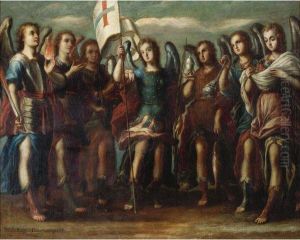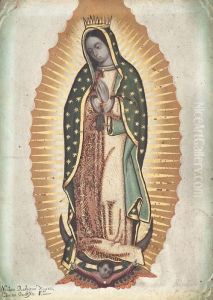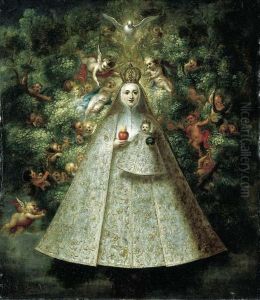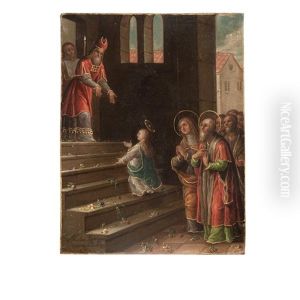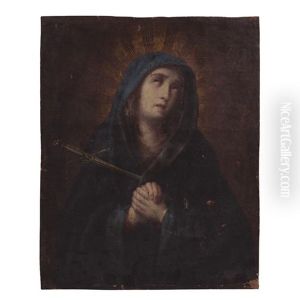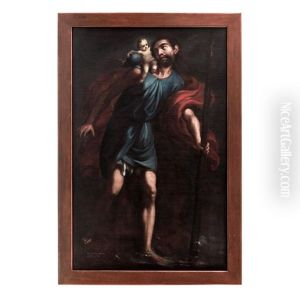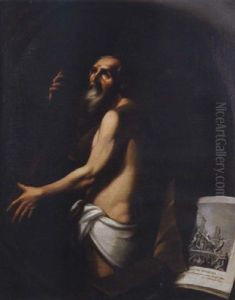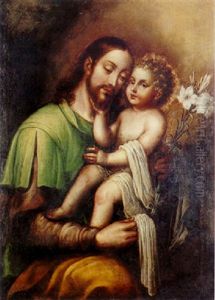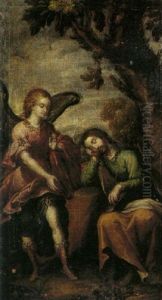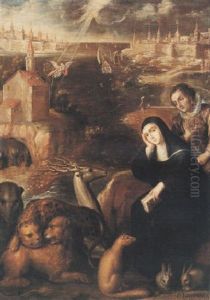Nicolas Rodriguez Juarez Paintings
Nicolas Rodriguez Juarez was a prominent Mexican painter, born in 1667 in Mexico City, then part of the Viceroyalty of New Spain. He belonged to a well-established family of painters and artists that played a significant role in the development of Mexican Baroque painting. His grandfather, José Juárez, and his father, Antonio Rodríguez, were both respected artists of their times, making Nicolas's choice of career almost a familial destiny. He continued the family tradition, becoming one of the most important and influential Mexican painters of the late 17th and early 18th centuries. Rodriguez Juarez's work is characterized by its incorporation of Baroque sensibilities, with a particular emphasis on dramatic lighting, religious subjects, and a vivid use of color. He was significantly influenced by the Spanish Baroque tradition, but he also managed to infuse his works with a local sensibility that made them uniquely Mexican. Over his career, he produced a vast number of religious paintings for churches and convents, as well as portraits and altarpieces, demonstrating both technical skill and a deep spiritual sensibility. His artworks contributed to the evolution of the Mexican Baroque style, moving it towards what would eventually be identified as the Mexican Churrigueresque by later generations. Nicolas Rodriguez Juarez was not only a prolific artist but also a teacher and a significant figure in the artistic community of New Spain. He held the position of director at the Academy of Painting in Mexico City, a testament to his skill, reputation, and contributions to the arts in New Spain. Through his teaching and leadership, he influenced subsequent generations of Mexican artists, leaving a lasting legacy that would shape the course of Mexican art history. Rodriguez Juarez passed away in 1734, but his works continue to be celebrated for their beauty, technical mastery, and historical importance. His paintings are preserved in various museums and churches, serving as a testament to the vibrancy of Mexican Baroque art and its enduring influence on the cultural landscape of Mexico.


